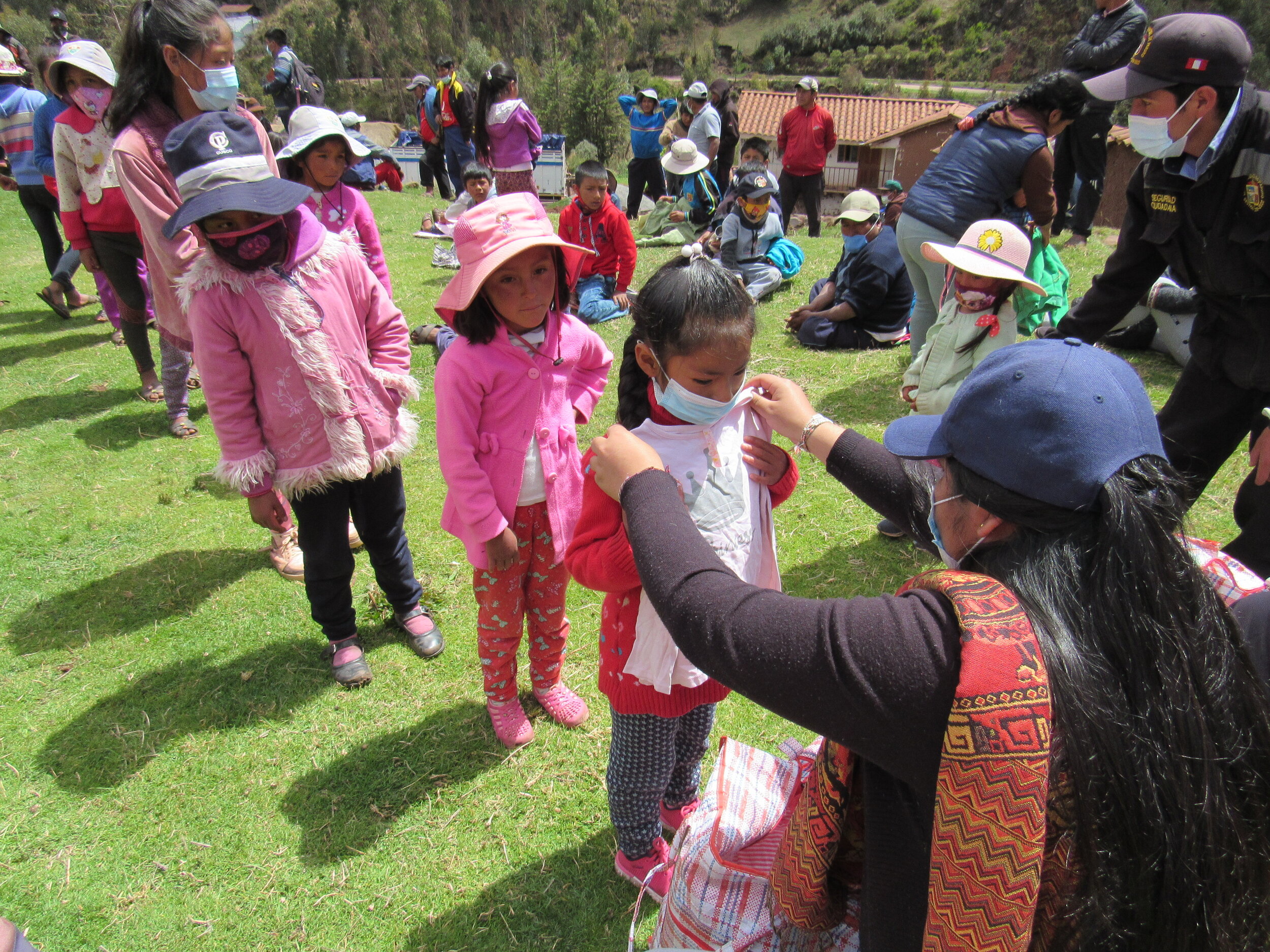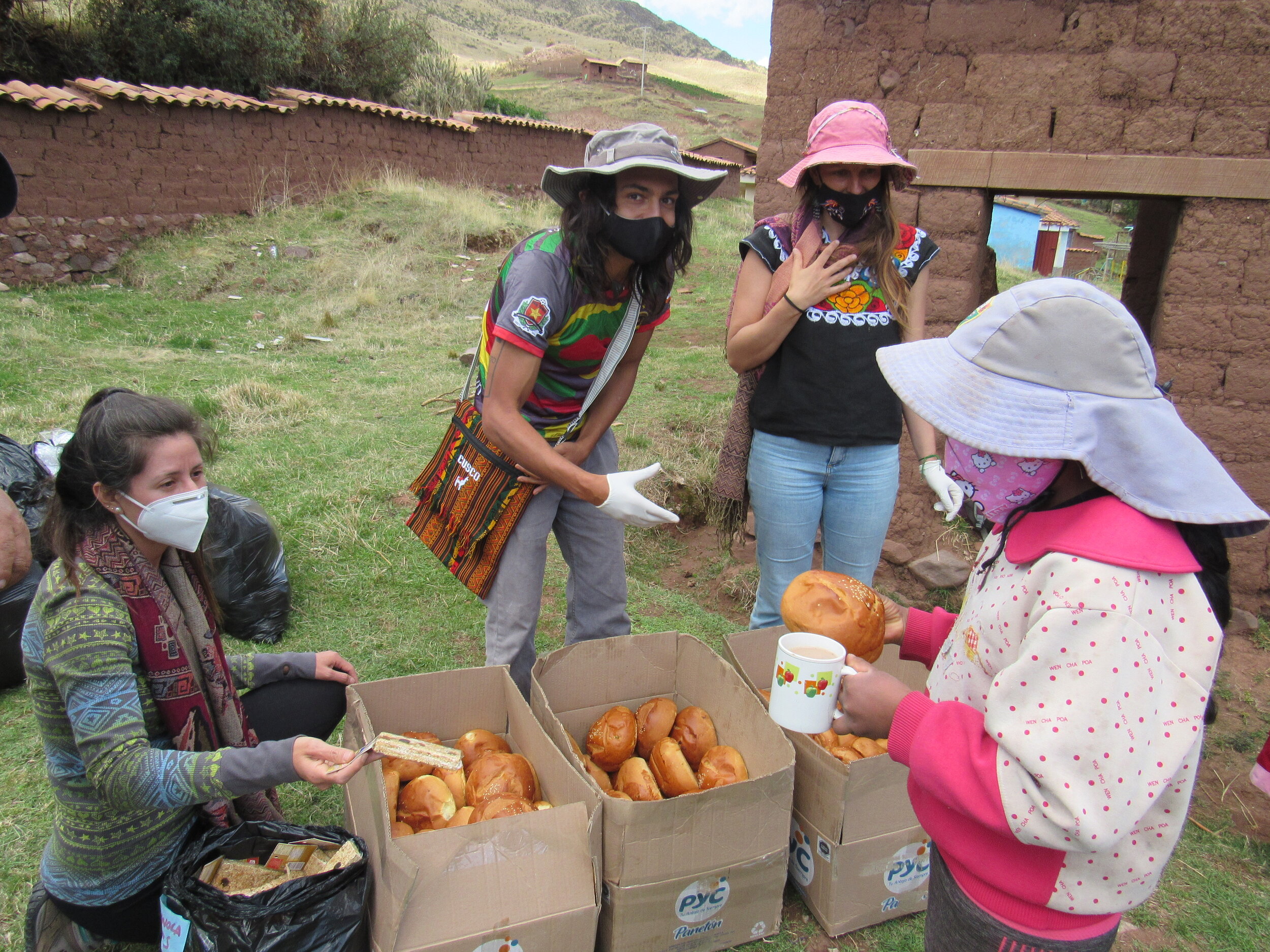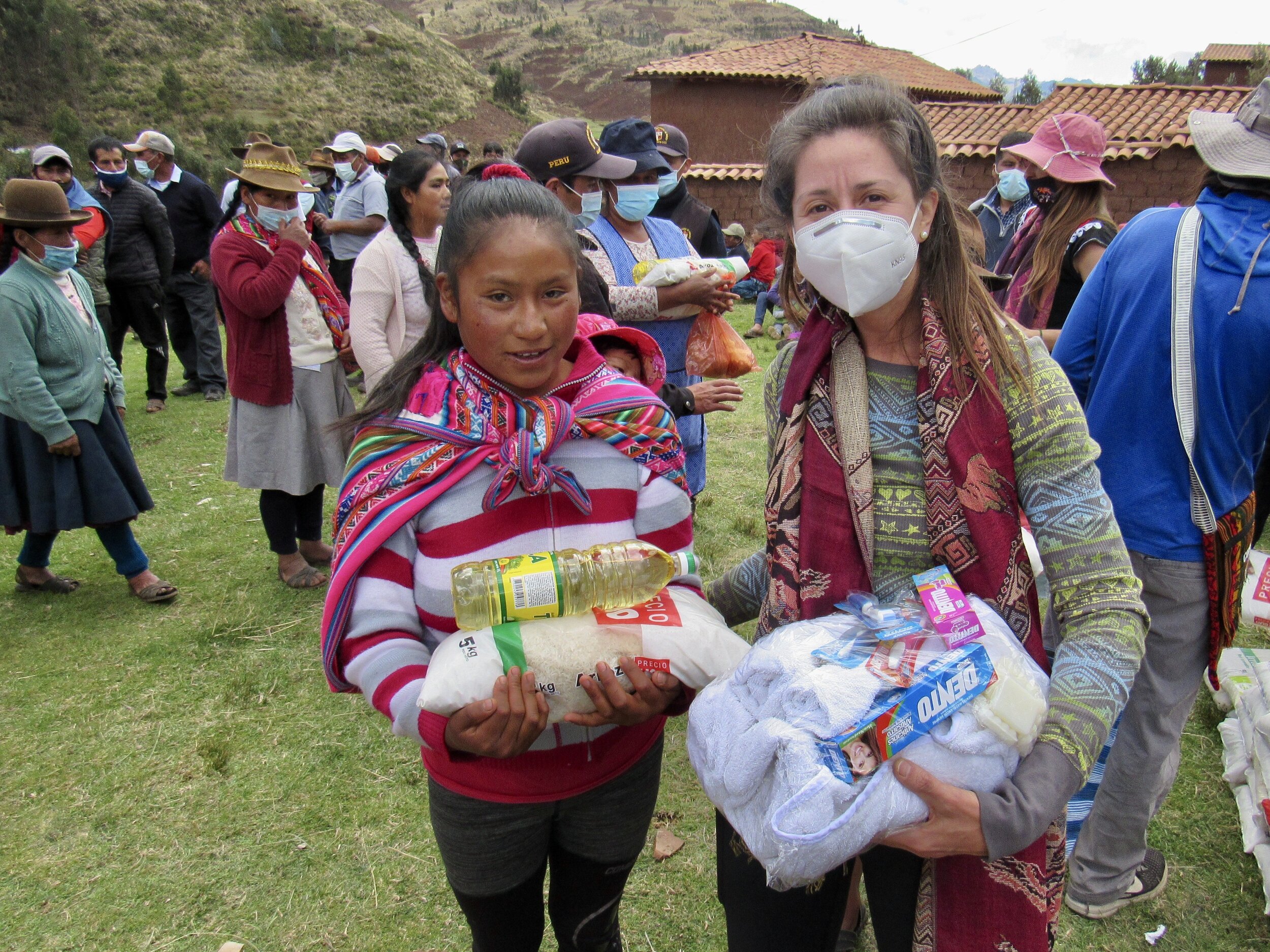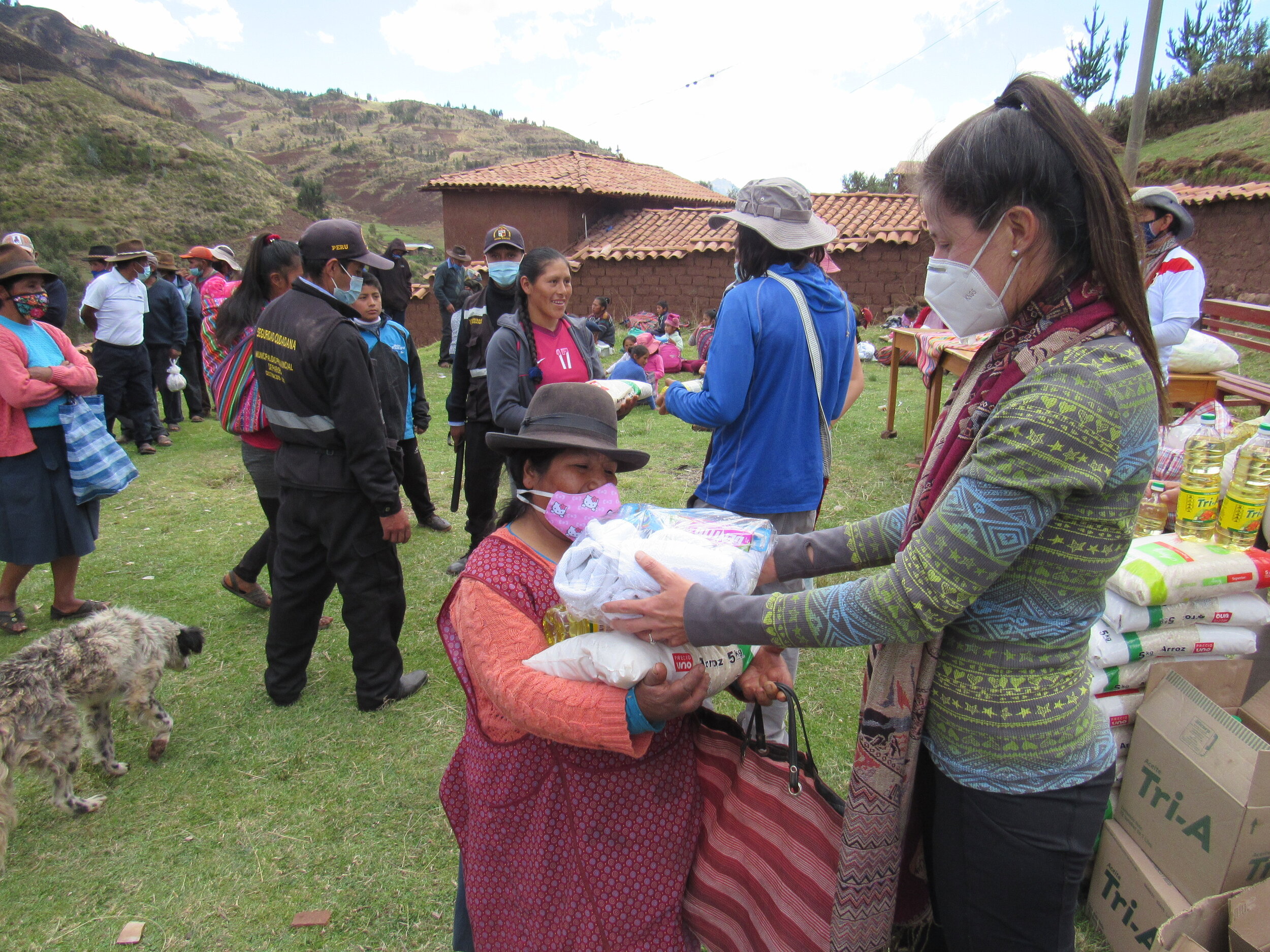Mayubamba & Paruro
Today was our second chocolatada and we met at the Maytaq Wasin Hotel at 5:30, to try to get the truck loaded and hit the road as early as possible. Today’s drive was only about three hours, which is closer to Cusco than some of our other villages. However, Mayubamba still lacks a lot of basic services. There is no government clinic and no regular transportation to or from town. Very few people in Mayubamba have vehicles or even horses. There is no cell service and only one radio station reaches them. Since all education in 2020 is supposed to be from home, children have to have radio, tv or internet in order to access the national curriculum, which is broadcast daily.
From Cusco, we first drove to Paruro, where Henry had planned to hold a second chocolatada on the same day. We dropped him off with one of the milk cans and 100 of the panettones at the elementary school in Paruro, then kept going to Mayubamba.
When we arrived, the people of Mayubamba already had a big cauldron of water boiling, ready for the chocolatada. When they saw the 30 liter milkcan, they ran to get a couple more pots, to take out some of the water so there was room to add the milk. It’s fresh milk, so they had to make sure to boil it before it could be served. We buy fresh milk because it’s more nutritious, supports local dairy farmers and comes in a metal milk can, so there is no trash from milk containers. To the boiling water and milk, we added three of the 1 kilo bricks of cacao, a bag of sugar, a handful of cloves and a stick of cinnamon the size of my arm.








All of the kids from the village were already there, so we lined them up, smallest to biggest to start giving out the clothes. It was pretty cute to see kids choose their favorite of the options available. It’s not always easy to judge the right size, but if the kid picks it out, I’m sure they’ll make it fit. After clothes was hot chocolate and panettone for everybody. After everybody had seconds on hot chocolate, we asked an adult representative from each household to line up for the rest of the donations.












The rice and oil seem pretty standard to me by now, so I was really happy to see the packs that Andrea had put together. From her hotel Maytaq Wasin, she donated six towels for each family. She has also been collecting donations, so she was also able to buy five bars of soap, four toothbrushes and toothpaste for each family. Hygiene is a real challenge when you live in an adobe home without plumbing and any help is appreciated. Andrea even included toothpaste for kids. Also, toothbrushes and toothpaste are not high on the priority list for families that are really struggling to get by. Few shops carry them and they’re just prohibitively expensive for most of the people of Mayubamba.









After we had handed out the food and packs from the hotel, we gave out some toys that David had collected from his students. Finally, we handed out the last of the panettones to anybody who had stuck around. It was a lot more than the village leaders were expecting and they were so happy. Before we left, the community president invited all of us for lunch, which was served in an empty classroom in the closed school.
Most communities are only able to share boiled corn or potatoes, which I am perfectly happy with! However, the mayor of Paruro had sent supplies to make chicken and potato soup with his assistants. He wasn’t able to be there today, but he certainly sent enough people to support us, including local police. It was cute to see the police helping the littlest kids who were having trouble carrying a mug of hot chocolate and the panettone and a granola bar, donated by the Maytaq Wasin.
The mayor also sent scarves and bags for those of us who came from Cusco. They’re from the Paruro artisans cooperative and are obviously made for the Cusco tourist souvenir market. Sadly, they have been sitting around for almost a year, since no tourists have been here to buy souvenirs. Tourism is starting to come back and I hope that the economy will revive. It’s starting very slowly, mostly with tourists from Lima. It may be several more months before people are able to travel from the US and Europe, where most of our tourists come from.











